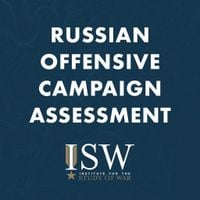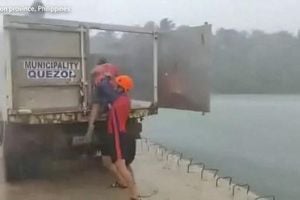On the windswept battlefields of eastern Ukraine, the weather has become more than a mere backdrop—it’s now a tool of war. In recent days, Russian forces have capitalized on dense fog and rain to undermine Ukraine’s drone-based defenses, mounting a series of mechanized assaults and targeted strikes that highlight both tactical innovation and the vulnerabilities of modern warfare. As the conflict grinds on into the winter of 2025, the stakes for both sides have only grown more complex, with new weapons, international support, and infrastructure attacks shaping the fight.
According to reporting from SPARTANAT and the Institute for the Study of War (ISW), Russian troops on November 14th exploited heavy fog in the Novopavlivka sector to launch a mechanized assault, reaching the town’s northwestern outskirts. Ukrainian volunteer Serhii Sternenko recounted that Russian forces made multiple incursions into Novopavlivka during this period, using both armored vehicles and infantry. "Russian forces set up a pontoon bridge between Yalta and Dachne and moved about 10 pieces of equipment across the Vovcha River," Sternenko reported, adding that Ukrainian forces detected the movement too late but managed to strike two tanks and five infantry fighting vehicles. Russian military bloggers also highlighted the use of heavy fog, noting that it allowed Russian troops to reinforce their positions after the initial attack.
The assault was spearheaded by the Russian 80th Tank Regiment, part of the 90th Tank Division and the 41st Combined Arms Army of the Central Military District. This wasn’t an isolated maneuver. Russian units have recently leveraged poor weather across several fronts, including Pokrovsk, Velykomykhailivka, and Hulyaipole. In these areas, the fog blunted Ukraine’s much-vaunted "wall of drones"—the extensive use of tactical and loitering drones that has been pivotal to Ukrainian defense. With drones grounded or hampered by the elements, Ukrainian positions, already stretched thin due to manpower and artillery shortages, became more susceptible to infiltration and attack.
Ukraine has relied on drones out of necessity, using them to compensate for gaps in traditional firepower and to cover a sprawling 1,200-kilometer front. However, as ISW analysts point out, this reliance has left Ukrainian defenses vulnerable when weather disrupts drone operations. Western-supplied artillery and other conventional systems remain essential for Ukraine to build a more resilient, layered defense—one not so easily undone by a change in the weather.
Yet, Ukraine is not standing still. On November 15th, the Ukrainian 7th Rapid Reaction Corps conducted an airstrike against the M-30 road between Pokrovsk and Selydove, impeding Russian attempts to infiltrate with light vehicles. The Ukrainian Air Force also struck a Russian transport communications hub and a concentration of troops near Shevchenko using a GBU-62 JDAM-ER guided bomb, and targeted a logistics bridge in occupied Zaporizhia Oblast. These actions signal Ukraine’s efforts to replicate, on a smaller scale, Russia’s ongoing campaign of battlefield air interdiction (BAI)—a strategy that uses glide bombs and drones to disrupt enemy logistics and rear-area concentrations.
The scale of Russia’s BAI campaign is formidable. Ukrainian intelligence, as reported by Reuters, estimates that Russia will produce up to 120,000 glide bombs in 2025, including 500 long-range variants capable of reaching 200 kilometers, with plans to extend that range to 400 kilometers. Major General Vadym Skibitskyi, Ukraine’s Deputy Chief of Military Intelligence, stated, "Russian forces have recently been launching 200 to 250 glide bombs daily—a sharp rise from an average of 170 per day in October 2025." He added that while Ukrainian forces can shoot down some of these bombs, the sheer quantity is "enormous." Russia is also expected to produce about 70,000 long-range drones this year, including 30,000 Shahed-type drones.
North Korea’s role in supplying Russia has become increasingly significant. Since 2023, North Korea has sent 6.5 million artillery shells to Russia, though shipments halved in 2025 due to dwindling stockpiles. After a pause in September, deliveries resumed in October. North Korea has also begun mass production of short-range first-person view (FPV) and medium-range strike drones, and is expected to send roughly 12,000 workers to the Alabuga Special Economic Zone in Tatarstan by year’s end to work in a Shahed drone factory. This collaboration not only bolsters Russia’s drone production but also offers North Korea valuable expertise in manufacturing modern strike drones at scale.
On the Ukrainian side, the consequences of Russia’s intensified strike campaign have been devastating. According to The Guardian, Russian forces have tripled their attacks on Ukraine’s rail system since July 2025, with 800 strikes since January damaging over 3,000 objects and causing $1 billion in damages. Russian drones, particularly Shahed models, have been used to target locomotives and major rail junctions such as Lozova in Kharkiv Oblast. The ISW notes that Russia has equipped some Shahed drones with thermal imaging and video streaming, enabling real-time pursuit of moving targets like trains.
Critical infrastructure beyond the railways is also under siege. Russian missile and drone strikes have targeted Ukrainian gas infrastructure throughout the 2025 heating season. As The New York Times reported, these attacks began after Ukraine halted Russian gas transit to Europe on January 1, 2025. By the end of the last winter, Russian strikes had knocked out about 40% of Ukraine’s gas production capacity, and renewed attacks in October 2025 destroyed another 60%. While underground gas storage remains out of reach for Russian missiles, compressor pumps and pipelines are being systematically targeted, threatening to complicate civilian life as temperatures drop.
Meanwhile, Russia is preparing to deploy more manpower to the front. On November 15, the Russian Ministry of Defense assembled the first group of involuntarily called-up reservists, sending them to training for two months, with likely deployment to occupied regions of Ukraine. Russian state media suggests these reservists may be used for "counterterrorism" operations in border oblasts, as well as to combat Ukrainian sabotage groups. This covert mobilization comes as Russia seeks to shore up its forces amid ongoing attrition.
The brutality of the conflict was underscored yet again when the far-right Rusich Sabotage Assault Reconnaissance Group, a Russian paramilitary unit, publicly acknowledged executing three Ukrainian servicemembers near Pokrovsk on November 15. The group’s leader, Alexei Milchakov, has been linked to previous war crimes and propaganda activities. ISW analysts note that such acknowledgments reflect a disturbing trend of the Russian military command endorsing or ordering war crimes on the battlefield.
As both sides adapt to the shifting realities of winter warfare, the lines between technological innovation, brute force, and international support continue to blur. The coming months will test not only the resilience of Ukrainian defenses but also the limits of Russian production and foreign partnerships. For now, the weather remains an unpredictable but potent force—one that neither army can afford to ignore.





